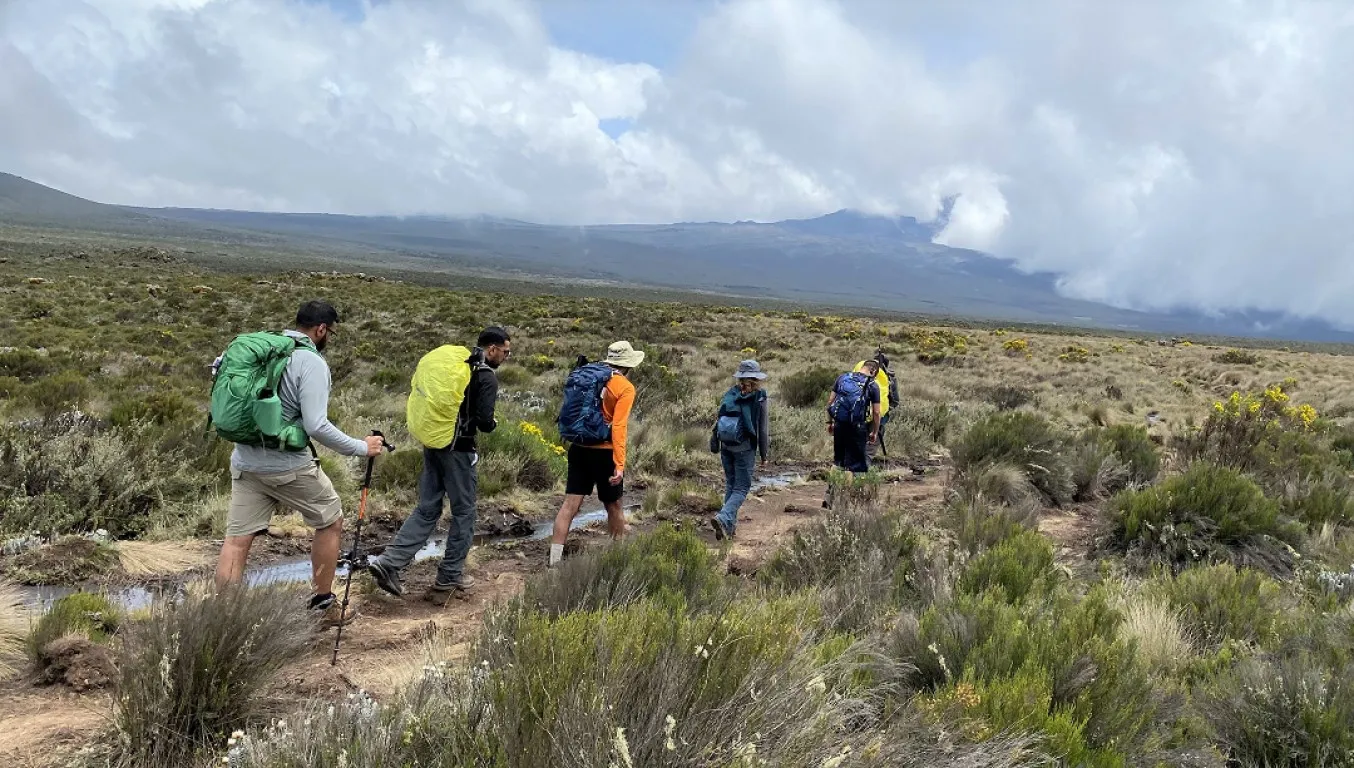6 Day Shira Route – Kilimanjaro Climb Package
The 6-day Shira Route is a scenic and less-traveled approach to Mount Kilimanjaro, beginning on the western side of the mountain. Starting with a drive to the Shira Gate at 3,500 meters, it offers a unique opportunity to begin the trek at a higher altitude, making it ideal for experienced trekkers already acclimatized to high elevations. The route features diverse landscapes, from moorlands and alpine desert to glacier views, and offers excellent opportunities for photography and wildlife spotting.
While it shares much of its path with the Lemosho Route after day one, the Shira Route is shorter and steeper in the early stages, making it better suited for those confident in their fitness and acclimatization. It’s a great choice for climbers seeking a quieter trail with breathtaking scenery and a direct start high on the mountain.

At a Glance
-
Duration: 6 Days on the mountain
-
Route Type: Camping accommodation
-
Start Point: Shira Gate
-
End Point: Mweka Gate
-
Difficulty: Moderate to challenging
-
Scenery: Moorlands, alpine desert, glaciers, and panoramic views
-
Best For: Experienced trekkers, photographers, and those already acclimatized
Detailed Itinerary – 6 Day Shira Route
Day 1: Shira Gate to Shira 1 Camp
Your climb begins with a drive to Shira Gate at 3,500 meters, where you register before starting your trek. The trail crosses the Shira Plateau, offering expansive views of the surrounding wilderness. This is a relatively short day to help you adjust to the altitude.
Day 2: Shira 1 Camp to Shira 2 Camp
A gentle trek across the plateau with views of Kibo Peak ahead and Mount Meru behind. You’ll pass wildflowers and unique high-altitude plants before reaching Shira 2 Camp.
Day 3: Shira 2 Camp to Barranco Camp via Lava Tower
Ascend into the alpine desert to reach Lava Tower (4,630m) for an important acclimatization stop. After lunch, descend to Barranco Camp, situated in a sheltered valley below the Barranco Wall.
Day 4: Barranco Camp to Barafu Camp
Start by climbing the Barranco Wall, a steep but non-technical scramble with rewarding views. The trail then ascends gradually through alpine desert to reach Barafu Camp, the base for your summit attempt.
Day 5: Summit Day – Barafu Camp to Uhuru Peak, then descend to Mweka Camp
Set off just after midnight for your summit push. Ascend to Stella Point (5,756m) before making the final trek to Uhuru Peak (5,895m), the highest point in Africa. After celebrating and taking photos, descend to Barafu Camp for a short rest, then continue down to Mweka Camp.
Day 6: Mweka Camp to Mweka Gate
Descend through the lush rainforest to Mweka Gate. After signing out, you’ll receive your summit certificate and be transferred back to your hotel.
What's Included
-
All Kilimanjaro National Park entry fees
-
All camping accommodations during the climb
-
Professional mountain guides, porters, and cook
-
All meals on the mountain
-
Drinking water and hot drinks
-
Rescue fees
-
Oxygen cylinder and first-aid kit
-
Pre- and post-trek briefing
-
Transportation to and from Shira Gate
-
Summit certificate (gold for Uhuru, green for Stella Point)
What's Not Included
-
Flights and visas
-
Travel insurance
-
Tips for guides and porters
-
Personal trekking gear (sleeping bags, boots, etc.)
-
Accommodation before and after the trek (can be added on request)
-
Extra snacks and beverages
-
Portable toilets (available at extra cost)
